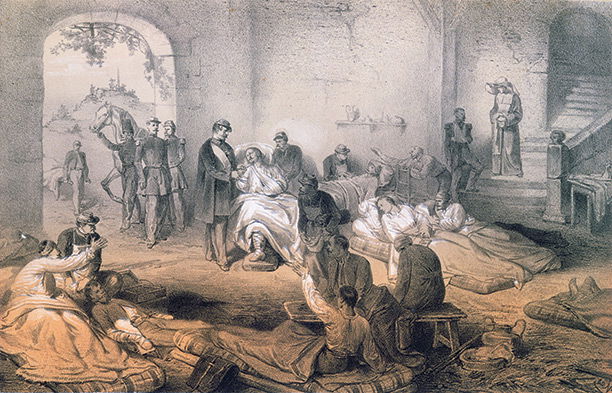Introduction:
March marks the annual observance of Red Cross Month, a time when communities rally to support and save lives through the American Red Cross's impactful humanitarian efforts. At Safecastle, we proudly align ourselves with this tradition that began in 1943, emphasizing the importance of support, solidarity, and actions that make a tangible difference. As we reflect on Clara Barton's legacy and the critical role of the Red Cross, Safecastle stands committed to supporting and saving lives in times of crisis.
What is Red Cross?
The Red Cross is a global humanitarian organization committed to alleviating human suffering. It operates through a vast network of volunteers and provides services such as disaster response, blood donation, health and safety training, support to military families, and international relief.
History of Red Cross:
The Red Cross, officially established in 1881 by Clara Barton, has a rich history rooted in providing humanitarian services during times of armed conflict and natural disasters. Barton's vision expanded beyond wartime support, encompassing disaster relief for natural catastrophes.
Origins of the Red Cross Movement:

The great humanitarian organisation was founded on 29 October 1863.
The International Red Cross and Red Crescent Movement, founded in 1863, traces its roots to the compassionate vision of Swiss businessman Henry Dunant. The movement was inspired by the aftermath of the Battle of Solferino in 1859, where thousands of men suffered and were left to die due to a lack of care.
Dunant proposed the creation of national relief societies composed of volunteers trained in peacetime to provide neutral and impartial help during times of war. In response to these ideas, the International Committee of the Red Cross was established in Geneva, and the founding charter of the Red Cross was drawn up in 1863. Additionally, Dunant's vision led to the adoption of the original Geneva Convention in 1864, an international agreement recognizing the status of medical services and the wounded on the battlefield.
Formation of the British Red Cross:
The formation of the British Red Cross can be traced back to the Franco-Prussian War in 1870. Colonel Loyd-Lindsay's letter to The Times calling for a National Society similar to those in other European nations prompted a public meeting in London on August 4, 1870. A resolution was passed to form a National Society in Britain to aid sick and wounded soldiers during times of war, following the rules of the Geneva Convention of 1864.
The British National Society for Aid to the Sick and Wounded in War was established and provided aid to both warring armies during the Franco-Prussian War and subsequent conflicts in the 19th century, operating under the protection of the red cross emblem. In 1905, it was renamed the British Red Cross, and in 1908, it received its first Royal Charter from HM King Edward VII, with Queen Alexandra as its president.
Evolution and Expansion:
To meet the demands of its wartime role, the British Red Cross adopted a permanent structure of local branches in 1907, extending its presence to communities across the country. The Voluntary Aid Scheme introduced in 1909 played a crucial role in mobilizing skilled volunteers. Voluntary Aid Detachments (VADs) were formed across the UK, with members providing aid to territorial medical forces during times of war.
The British Red Cross continued to evolve and expand its mission, becoming a vital humanitarian organization with a focus on providing aid, relief, and support in times of crisis. The dedication of skilled volunteers and the organization's adherence to the principles of the International Red Cross and Red Crescent Movement have solidified its role in shaping the history of humanitarian assistance.
Supporting Red Cross Month Initiatives:
-
Volunteer Engagement: Safecastle urges individuals to actively engage in volunteer opportunities within their local Red Cross chapters. By volunteering time and skills, we contribute to a network of dedicated individuals ready to provide immediate support during emergencies.
-
Blood and Platelet Donations: A cornerstone of the Red Cross mission, Safecastle encourages scheduling blood or platelet donations to bolster the blood supply, ultimately saving lives in critical situations.
-
Monetary Contributions: Recognizing the financial backbone of the Red Cross's operations, Safecastle emphasizes the importance of making monetary contributions. These funds cover essential costs for medical supplies, food, and relief items, ensuring effective responses to disasters.
-
Lifesaving Training: Safecastle applauds individuals enrolling in first aid, CPR, and AED courses during March. By acquiring lifesaving skills, we empower ourselves to be immediate responders in emergencies, contributing to the chain of support and saving lives.
-
Awareness Campaigns: Utilizing social media platforms, Safecastle encourages everyone to share stories, support, and experiences during Red Cross Month. Through the hashtag #RedCrossMonth, we aim to raise awareness and inspire others to actively support and save lives.
Safecastle's Commitment to Support and Save:
Aligned with the principles of humanity, impartiality, neutrality, independence, voluntary service, unity, and universality, Safecastle commits to actively supporting and saving lives in collaboration with the Red Cross. Our emphasis is on the critical role played by the Red Cross during climate disasters, in blood donations, and in providing support to military families and global crises.
Looking Ahead:
As Red Cross Month unfolds, Safecastle urges individuals, businesses, and communities to reflect on the profound impact of support and actions in times of crisis. Together, we contribute to a world where the ethos of saving lives prevails, upholding the dignity of every individual, irrespective of their circumstances.
Conclusion:
Red Cross Month is not merely an observance but a call to action. Safecastle stands shoulder to shoulder with the American Red Cross, emphasizing the need for active support and life-saving initiatives. Through volunteering, blood donations, monetary contributions, training, and awareness, we collectively contribute to a world where no one faces a crisis alone. Let us be the unwavering support, embodying the spirit of saving lives throughout Red Cross Month and beyond.


